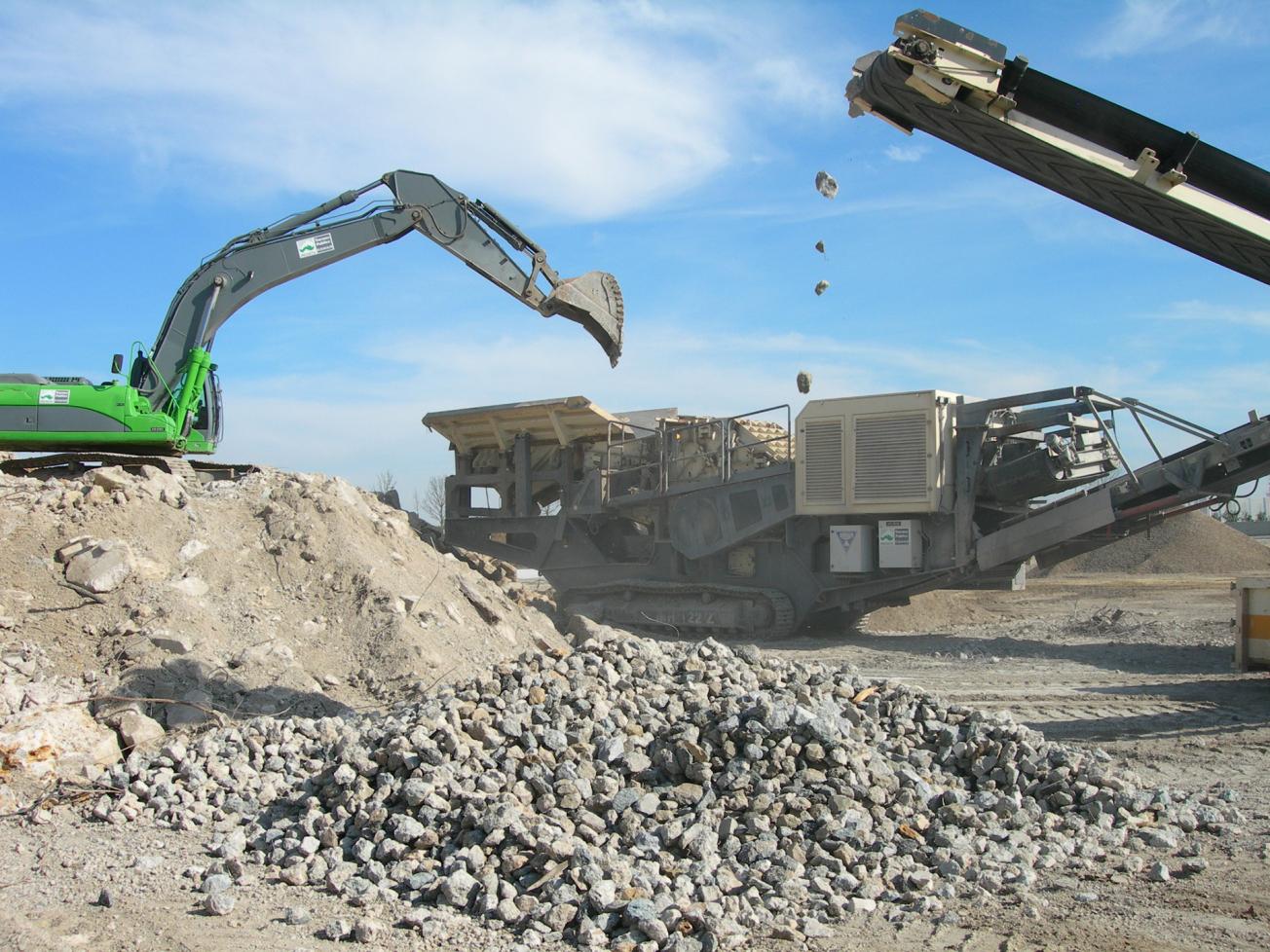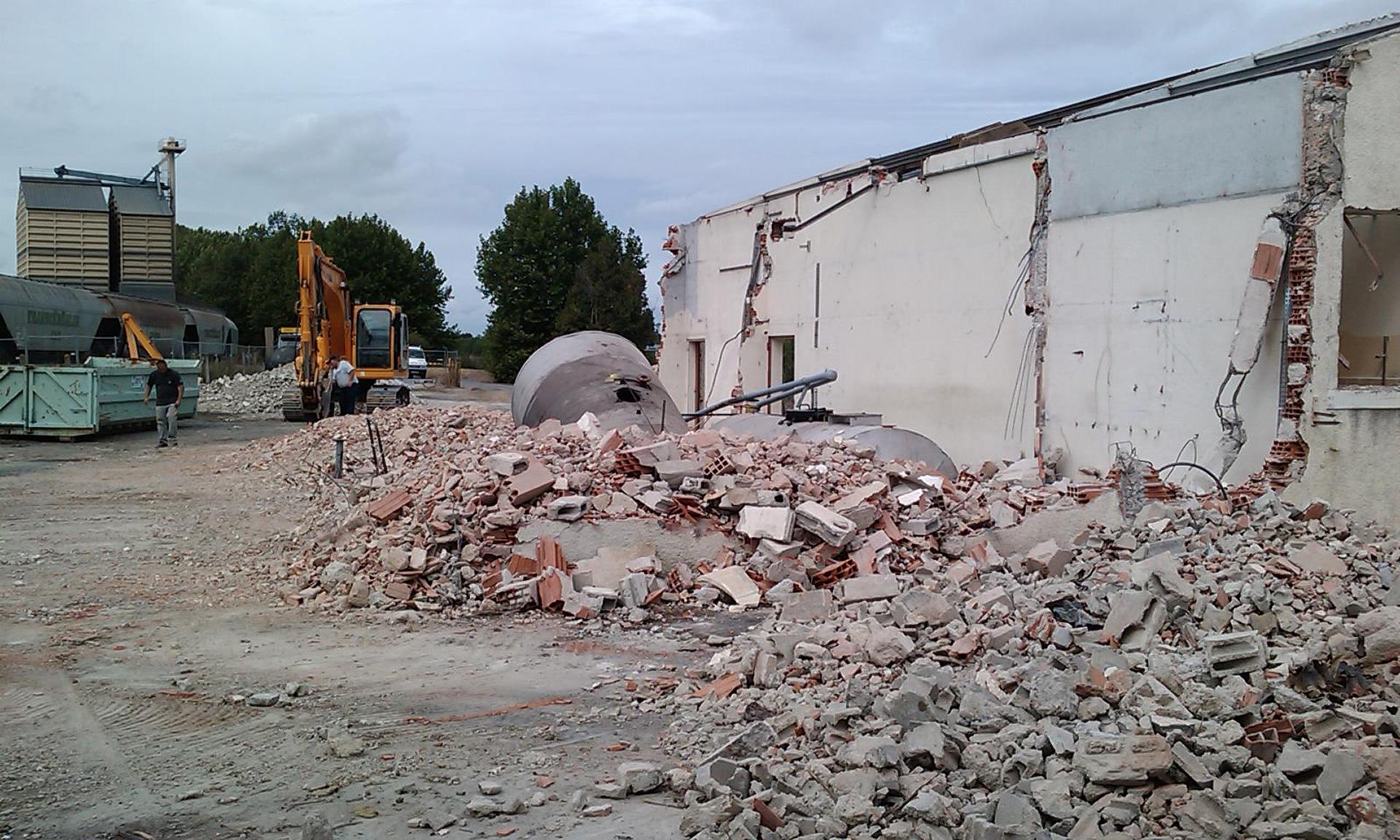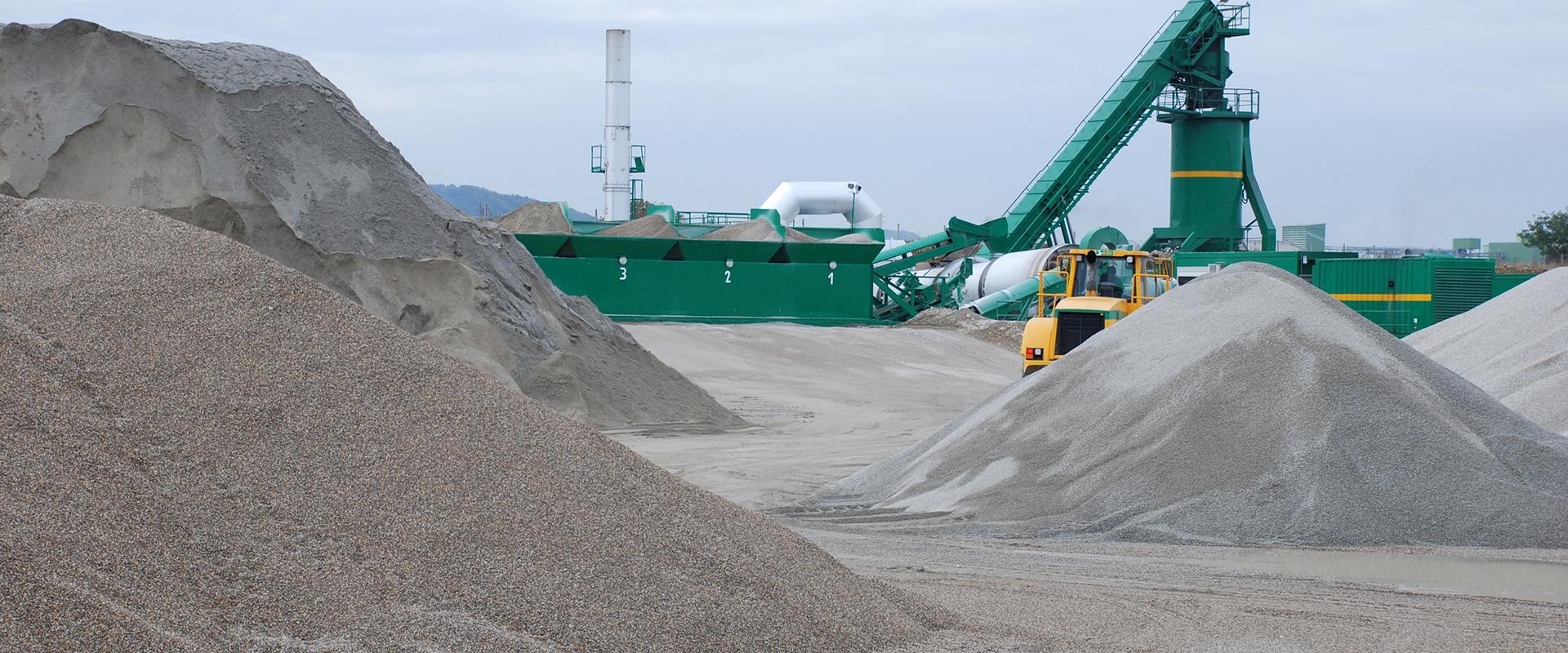
A mobile plant for crushing demolition concrete for recycling.
© BRGM
ASURET (Systems analysis of the use of renewable resources from the technosphere) and COFRAGE are two projects that exemplify eco-technology applications for sustainable waste management. ASURET, a systems analysis project, is investigating flows to support the establishment of recycling industries. COFRAGE is purely technological and focuses on selective fragmentation of concrete for recycling. Organisation and technology: two different scales and two different levels where eco-technologies can help to resolve both economic and environmental issues.
The problematical case of construction waste
The construction industry alone generates 48 million tonnes of waste from building sites each year, including 260 million from civil engineering works and accounting for about 40% of all materials transported in a given year. This is a potentially large but poorly investigated reservoir of reusable materials, in a sector where recycling is still very marginal. Helping the sector move to more sustainable practices means addressing its overall organisation by developing decision-support tools, and working at the same time to develop operational technologies to reduce its environmental impacts through recycling. The BRGM is involved in both of these flagship projects.
ASURET: developing ways of representing materials flows
BRGM is performing a global systems analysis of materials flows in construction activities. It is addressing the question of the scales in time and space to be considered in organising waste recycling and re-use as well as the economic, technical and social conditions required for their optimisation: what facilities, what capacities, what locations – and for which materials? How can synergies be developed between all those concerned (policy-makers, businesses, etc.), and how should progress be assessed?
ASURET is an ANR-Ecotech project that draws on analyses of materials flows in two different areas (the City of Orleans and the Bouches-du-Rhône département) and on a participatory process that involves the planning and civil engineering agencies in each area (policy-makers, technicians and businesses). A seminar presenting the main results was held on 6 June 2013 in the presence of representatives from the local authorities and professional unions and federations concerned. The project deliverables will be posted to the BRGM extranet. BRGM’s teams are working to develop ways of mapping all accumulated, incoming and outgoing flows in each area. The aim is to create a “toolbox” that can be used, on the basis of an area diagnosis, to influence practice, organise and establish entire recycling sectors and build up the indicators required to assess progress.

Key figures
-
48.00million tonnes of building waste produced each year by the construction industry
COFRAGE: Selective fragmentation of demolition concrete to improve recycling
Every tonne of concrete produced consumes large quantities of materials and releases some 800kg of CO2. Natural aggregate deposits are becoming depleted and current methods of sifting and crushing concrete are not selective and do not allow optimum recycling as they cannot sift out the hydrated cement paste from aggregate and sand. Crushed concrete is therefore mainly used for road embankments.
Given this situation, COFRAGE has been opening up new avenues for complete recycling of construction concrete. The BRGM took part in the assessments of two innovative technologies for treating concrete prior to crushing without affecting the quality of the initial materials: electro-hydraulic fragmentation by applying high-voltage electrical impulses through concrete blocks immersed in water, and an embrittling technique using microwaves that differentially heat up the constituent mineral phases of concrete. When sufficiently brittle, the concrete blocks are then crushed in the conventional way to separate the aggregate from the hardened cement paste.
And it works! The project has demonstrated the effectiveness of microwave heating and electro-hydraulic fragmentation for separating aggregate without damaging its properties. As regards energy consumption, the materials and enthalpy balances show a drop of up to 16% in specific CO2 emissions through the entire recycling chain.







